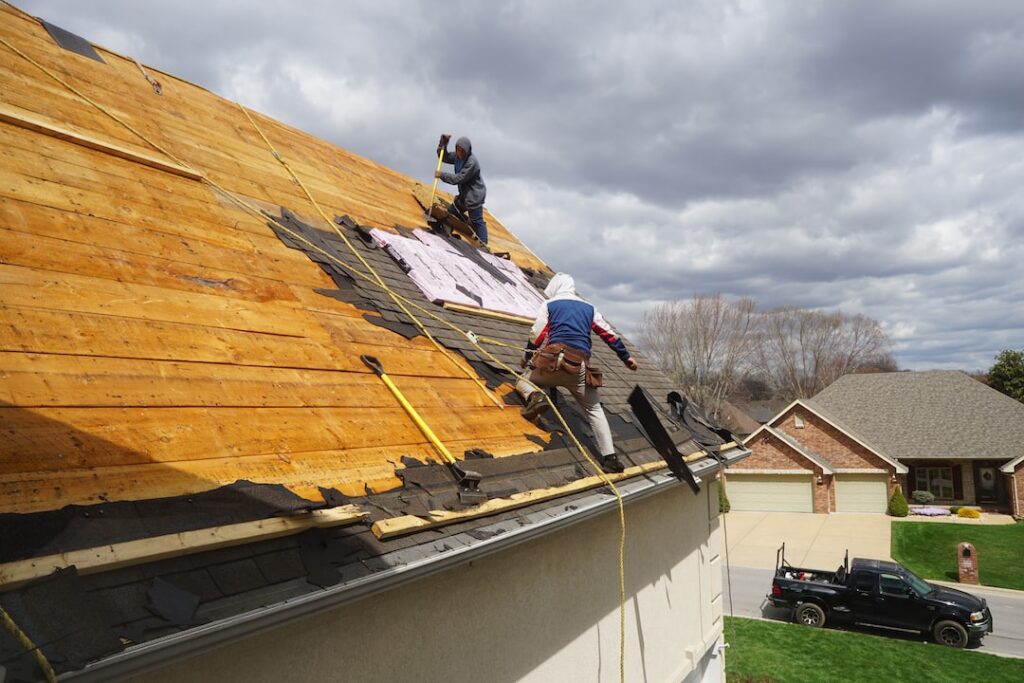A roof over your head is more than just a saying—it’s essential to your home’s protection and comfort. But how do you know when it’s time for a new one? This comprehensive guide explores the signs that indicate your roof might need replacing and offers practical tips to help you make informed decisions.
Why Replacing Your Roof Matters
Roofs do more than keep the rain out; they are critical in insulation, energy efficiency, and aesthetic appeal. According to seasoned roofers from theroofrangers.com, neglecting roof maintenance or replacement can lead to leaks, structural damage, and increased energy bills. Monitoring your roof’s condition ensures your home remains safe and comfortable. A timely roof replacement can enhance your home’s resale value, improve energy efficiency, and prevent costly repairs.
The Lifespan of Different Roofing Materials
Different materials have varying lifespans, and knowing what type you have can help you estimate when a replacement might be necessary—asphalt shingles, a popular choice, typically last 20 to 30 years. Metal roofs can endure for 40 to 70 years, depending on the quality and installation. Meanwhile, clay and slate tiles are known for their impressive lifespans of 50 to over 100 years. The durability of roofing materials largely depends on the installation quality, climate, and regular maintenance. Even the most durable materials require periodic inspections and care to meet their full lifespan potential. Consider these factors when assessing your roof’s condition and planning a replacement.
Inspecting for Visible Damage
Visible damage is one of the most straightforward indicators of roof problems. Start by looking for cracked, curled, or missing shingles. These signs suggest that your roof is aging and might soon need replacement. Additionally, check for any granule loss; asphalt shingles often shed granules as they deteriorate, leading to bald spots on your roof.
Your inspection should also include looking for leaks or water stains inside your home. Water damage can signify that your roof’s protective barrier has been compromised. If you notice mold or mildew, this could indicate a prolonged leak or poor ventilation, requiring immediate attention.
While inspecting for visible damage, pay attention to your roof’s flashing. Flashing protects areas where the roof meets vertical surfaces, like chimneys or skylights.
Weather’s Impact on Roof Longevity
Homes in areas with harsh weather conditions, such as intense heat, heavy snowfall, or frequent storms, may experience more rapid wear and tear. Each weather condition poses unique challenges to your roof’s materials and can accelerate the need for replacement. Extreme weather can cause shingles to crack, curl, or even blow off. Ice dams can form in colder climates, leading to water damage and leaks. Regular inspections and maintenance in response to local weather conditions can help extend your roof’s lifespan. By addressing minor issues early, you prevent them from escalating into major, costly repairs or necessitating a complete replacement prematurely.
Understanding the Cost of a New Roof
The price of a new roof depends on factors like the size of your home, material choice, and labor costs. Material costs can vary widely, and labor costs vary depending on location, roof complexity, and contractor experience. When budgeting for a new roof, consider potential additional costs such as permits, old roof removal, and disposal. Getting multiple quotes from reputable contractors will give you a clearer picture of what to expect financially.
Look for contractors with solid reputations. They should also offer warranties on both materials and labor. Don’t hesitate to ask questions about their experience with your specific roofing material and any recent projects similar to yours. Trust your instincts when meeting with contractors. Choose someone who communicates, listens to your concerns, and provides transparent, honest advice. A good contractor is crucial to a stress-free, quality roof replacement process.
Roof Replacement vs. Repair
Deciding whether to repair or replace your roof depends on the extent of the damage and its age. Minor, localized issues like a few damaged shingles can often be repaired without replacing the entire roof. However, widespread damage or aging roofs usually warrant a complete replacement to ensure long-term protection. Consider the cost-effectiveness of each option. Repeated repairs on an old roof can quickly add up, making replacement the more economical choice in the long run. An experienced contractor can help assess your roof’s condition and recommend the best action.
- Timing Your Roof Replacement
The best time of year for roof replacement is typically in the spring or fall when weather conditions are more predictable and mild. Planning can ensure your project starts and finishes without weather-related delays. Seasonal considerations can also affect pricing and contractor availability. During peak seasons, demand for roofing contractors increases, potentially leading to higher prices and longer wait times. Scheduling your replacement during off-peak months might offer cost savings and more flexibility. Regardless of the season, prioritize your roof replacement if you notice severe damage or leaks. Delaying necessary work can lead to further damage, increasing costs and risking your home’s structural integrity.
You can make proactive decisions about your roof’s upkeep by staying informed about material lifespans, visible damage, and weather impacts. Selecting the right contractor and considering options like energy efficiency and sustainability add layers of benefit to your investment.
Whether you choose to repair or replace, a well-maintained roof is a commitment to your home’s future.






